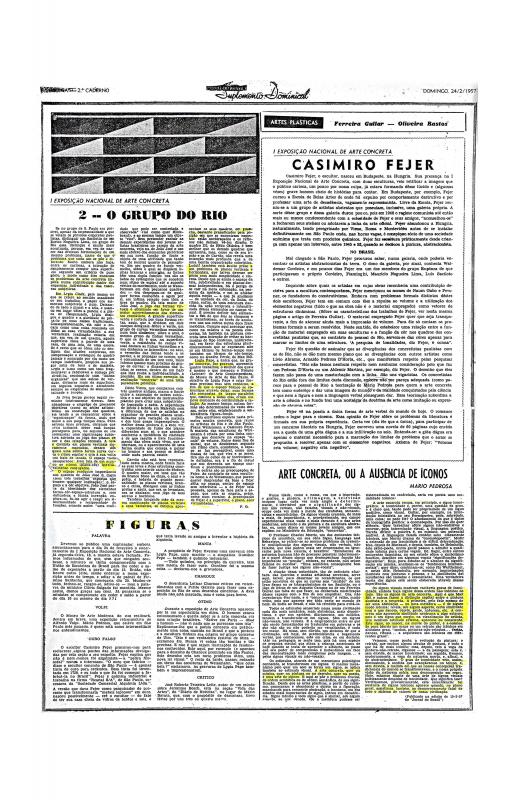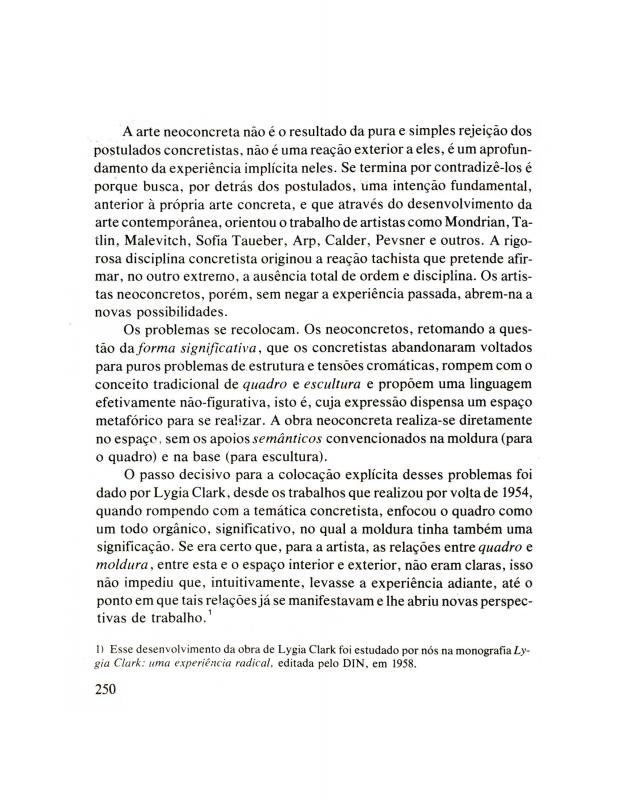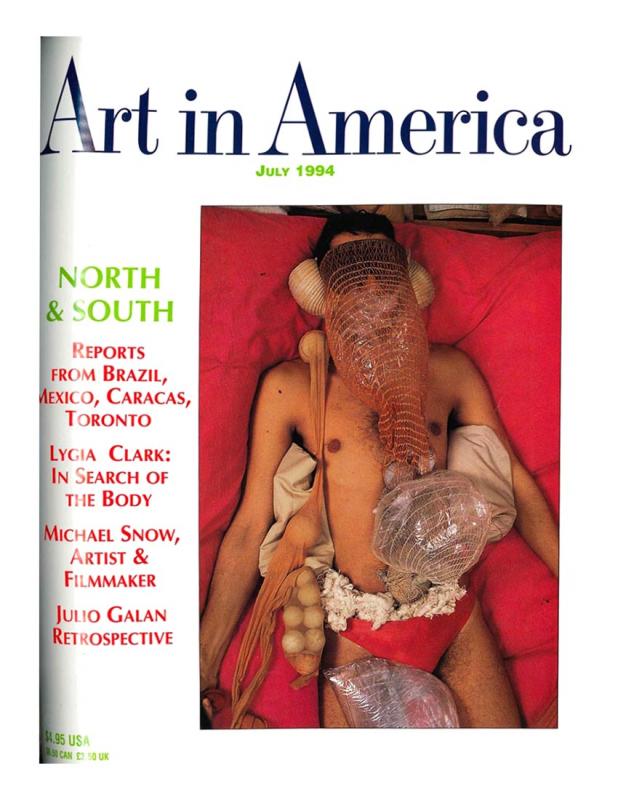In this interview, Lygia Clark focuses primarily on the centrality of man and his enveloping and motor structure, that is, the body. Indeed, those concerns would form the basis of the somatic-therapeutic project she would go on to pursue until the end of her days.
Vera Pedrosa [Martins Almeida] (b. 1936) is the daughter of eminent art critic Mário Pedrosa (1900–81). A poet close to the visual arts, Vera pursued a diplomatic career at the Itamaraty, serving as the Brazilian Ambassador to Ecuador, Denmark and France.
Brazilian artist Lygia Clark (1920–88) was active from the late forties through the eighties. In the fifties, after briefly producing figurative work on canvas, she joined a group of Rio de Janeiro-based artists initially known as Grupo Frente. Under the leadership of Ivan Serpa, that group looked to São Paulo as it became part of the Brazilian Concrete movement. Art critic Ferreira Gullar’s text “I Exposição Nacional de Arte Concreta: 2 ? O grupo do Rio” [doc. no. 1090217] describes and comments on work by Clark and others in the exhibition held in 1956. In the late fifties, Clark became part of the Neo-Concrete movement, which radically questioned the Concrete movement. That later movement began in 1959 with the launching of the “Manifesto Neoconcreto” written by Ferreira Gullar with artists Franz Weissmann, Amílcar de Castro, Lygia Pape, Reynaldo Jardim (who worked in theater), and Theon Spanudis (a poet), all of whom participated in the aforementioned I Exposição de Arte Neoconcreta (1959) in Rio.
Ferreira Gullar also considers the course of Clark’s work in the text, written in 1960, entitled “Do quadro ao não objeto” [doc. no. 1091272]. For a critical analysis of Clark’s international career through the eighties, see “Lygia Clark: In Search of the Body” [doc. no. 1232526], written in 1994 by English curator and critic Guy Brett, who took an active interest in her production from the beginning.



